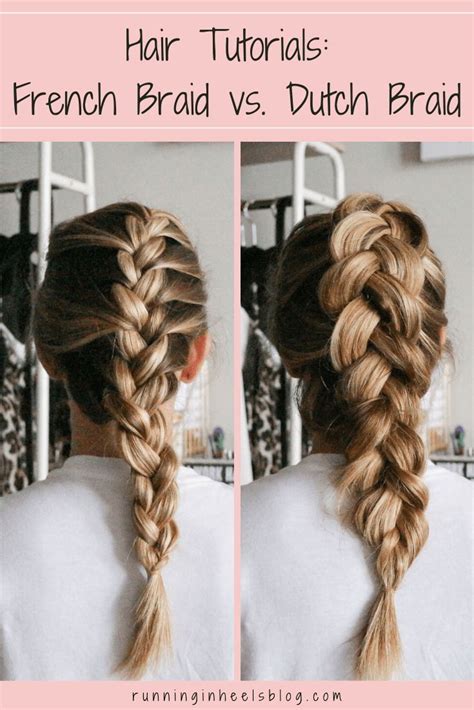When it comes to braiding, two of the most popular techniques are the Dutch braid and the French braid. Both create a beautiful and intricate look, but they have some key differences.

Origin of Dutch Braid vs. French Braid
Dutch braids, also known as inverted braids, have their roots in Africa. The technique was likely developed as a way to protect hair from the elements and to create intricate hairstyles.
French braids, on the other hand, originated in France in the 18th century. They were often worn by upper-class women as a symbol of status and fashion.
How to Dutch Braid
To do a Dutch braid, follow these steps:
- Start by dividing your hair into three equal sections.
- Cross the right section over the middle section.
- Then, cross the left section over the new middle section (which was previously the right section).
- Take a small section of hair from the left side and add it to the right section.
- Cross the right section over the middle section.
- Take a small section of hair from the right side and add it to the left section.
- Cross the left section over the middle section.
- Repeat steps 4-7 until you reach the end of the hair.
- Secure the end of the braid with a hair tie.
How to French Braid
To do a French braid, follow these steps:
- Start by dividing your hair into three equal sections.
- Cross the right section over the middle section.
- Then, take a small section of hair from the left side and add it to the right section.
- Cross the right section over the middle section.
- Take a small section of hair from the right side and add it to the left section.
- Cross the left section over the middle section.
- Repeat steps 3-6 until you reach the end of the hair.
- Secure the end of the braid with a hair tie.
Dutch Braid vs. French Braid: Comparison
| Feature | Dutch Braid | French Braid |
|---|---|---|
| Appearance | Thicker and more voluminous | Thinner and less voluminous |
| Technique | Inverted | Not inverted |
| Difficulty | More difficult | Less difficult |
| Ideal hair type | Thick hair | Thin or fine hair |
| Versatility | Can be dressed up or down | More elegant and formal |
Tips and Tricks for Dutch and French Braiding
- To create a tighter braid, pull the hair sections more tightly as you cross them.
- To create a looser braid, pull the hair sections less tightly as you cross them.
- To add volume to the braid, tease the hair before braiding it.
- To secure the braid, use a hair tie that matches the color of your hair.
- To decorate the braid, add ribbons, beads, or other hair accessories.
Pros and Cons of Dutch and French Braids
Dutch Braids
-
Pros:
- Thicker and more voluminous
- Can be dressed up or down
- Versatile
-
Cons:
- More difficult to do
- May be too heavy for fine hair
French Braids
-
Pros:
- Less difficult to do
- More elegant and formal
- Ideal for thin or fine hair
-
Cons:
- Thinner and less voluminous
- May be too simple for some occasions
Conclusion
Both Dutch braids and French braids are beautiful and versatile hairstyles. The best choice for you will depend on your hair type, the occasion, and your personal preferences. With a little practice, you can master both techniques and create stunning braids that will turn heads.
